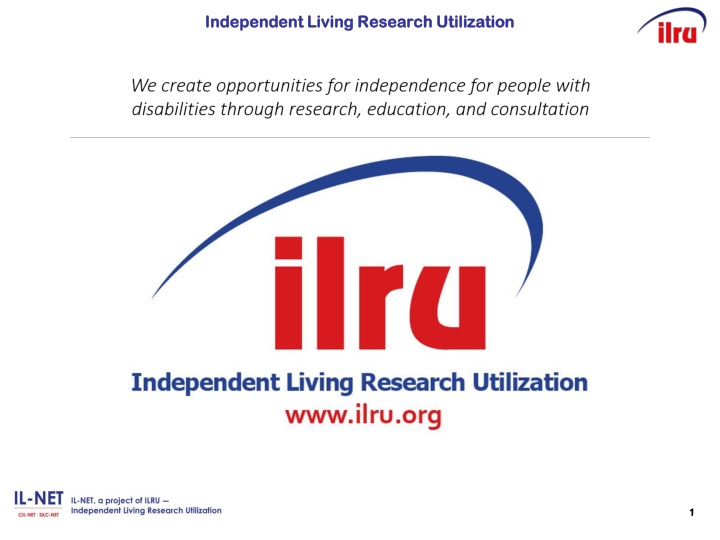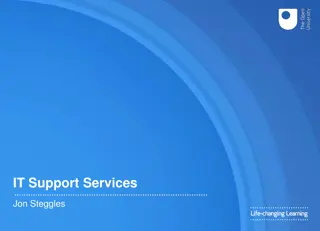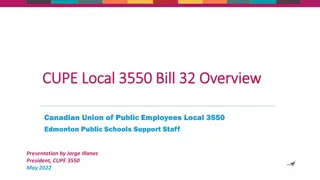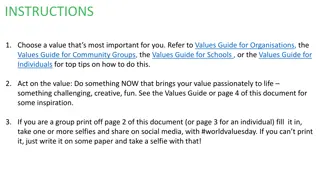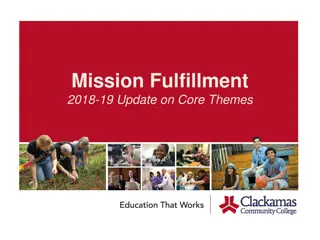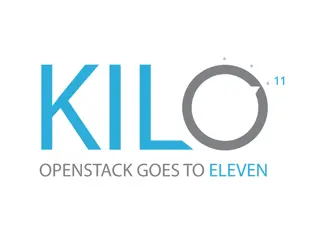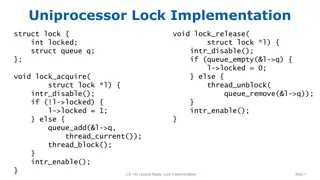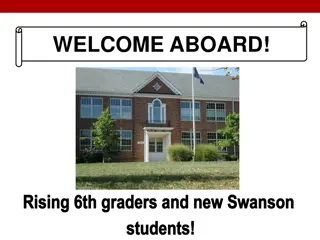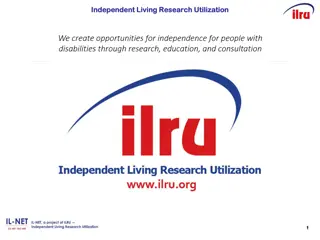Enhancing Adult Learning Styles for Effective Instruction
Diverse ways adults learn and how to tailor instructional approaches to accommodate visual, auditory, and kinesthetic learners. Understand the impact of utilizing different learning styles on information retention. Gain insights on strategies to engage visual learners through visual aids and interactive methods, and how to effectively communicate with auditory learners to enhance their learning experience.
Uploaded on Dec 13, 2024 | 2 Views
Download Presentation

Please find below an Image/Link to download the presentation.
The content on the website is provided AS IS for your information and personal use only. It may not be sold, licensed, or shared on other websites without obtaining consent from the author.If you encounter any issues during the download, it is possible that the publisher has removed the file from their server.
You are allowed to download the files provided on this website for personal or commercial use, subject to the condition that they are used lawfully. All files are the property of their respective owners.
The content on the website is provided AS IS for your information and personal use only. It may not be sold, licensed, or shared on other websites without obtaining consent from the author.
E N D
Presentation Transcript
Independent Living Research Utilization Independent Living Research Utilization 1 1
Get to the Core of It: Get to the Core of It: Integrating CIL Core Services for a Integrating CIL Core Services for a Holistic Consumer Experience Holistic Consumer Experience Implementing or Strengthening Effective Core Services in Implementing or Strengthening Effective Core Services in IL Skills Training IL Skills Training Presenters: Presenters: Darrel Christenson Darrel Christenson Amina Donna Kruck Amina Donna Kruck May May 3, Tempe, AZ Tempe, AZ 3, 2018 2018 2
Adult Learning and Instructional Design Adult Learning and Instructional Design Amina Kruck Amina Kruck 3
Did You Know? Did You Know? Adults retain approximately 10% of what they see 30%-40% of what they see and hear 90% of what they see, hear, and do. 4
Adult Learning Styles Adult Learning Styles Adults have the capability to learn via all styles, but are usually dominant in one Visual Learners Auditory Learners Tactile or Kinesthetic Learners Know your own learning style so you can more purposefully vary your learning lessons. 5
Visual Learners Visual Learners - - Show me! Show me! Learn by looking, seeing, viewing, and watching. They love graphs, diagrams, and illustrations. Often sit in the front to avoid visual obstructions and to watch you, the instructor. Tend to take detailed notes to absorb information. Provide, write on the white board, and use phrases like, Do you see how this works? 6
Auditory Learners Auditory Learners - - Tell me! Tell me! Learn by listening, hearing, and speaking. They pay close attention to the sound of your voice and all of its subtle messages. Tend to actively participate in discussions. Learn best through lectures, discussions, and brainstorming. Speak clearly, ask questions to engage them, and use phrases like, How does that sound to you? 7
Tactile/Kinesthetic Learners Tactile/Kinesthetic Learners Let me do it! Let me do it! Need to physically do something to understand it. They trust their feelings and emotions about what they re learning and how you re teaching it. They want to actually touch what they re learning. They need activity and exploration. Difficulty sitting for long periods. Will get up and volunteer to help you. Like role playing. Involve them, allow them to practice what they re learning, and use phrases like, How do you feel about that? 8
Adult Learning Principles Adult Learning Principles Malcolm Knowles (1913-1997), developed a set of core adult learning principles. Create a cooperative learning environment with a climate of mutual trust and mutual expectations. Training for adults needs to be Relevant Motivational Interactive 9
Relevance Relevance What s in it for me? What s in it for me? Adults must see a reason for learning something and the learning must be applicable to their lives, work, or other responsibilities in order for it to have value. Adults want to apply what they are learning immediately. Help them see the benefits and the costs of not learning. 10
Relevance Relevance Demonstrate through Practical application Problem-solving activities Action plans 11
Self Self- -Direction Direction Your role is more as a facilitator, guiding consumers to their own knowledge rather than supplying them with all of the facts. Make it interactive. Give them responsibility and choices. Opportunities to assess their own learning. Allow them to discover things on their own. 12
Respect and Value their Experience Respect and Value their Experience Connect learning with their own experiences. Allow opportunities to practice new skills. Students are a resource for each other. Incorporate peer-mentoring by pairing up those with more experience with less those knowledgeable. Show them role models - bring in community speakers with disabilities. 13
Incorporate Self Awareness Incorporate Self Awareness Experience also serves as a source of an adult s self- identity. The consumer may come into a learning situation with biases from past experiences that go unrecognized. Take the time to address any erroneous or preconceived ideas that come up. 14
Remember Remember They are here by choice! They are here by choice! They must be actively involved in their learning, not just passively listening. Give them time to process what they are learning and how it fits with their experience and feelings. Break up and do periodic Think and Listen dyads so they can process what they are learning (thinking and feeling). Note: learning is not just a mental process. Information is often taken in with emotional connections. 15
Time Time Get to know your audience. Adults are busy with many responsibilities. Respect their time. Make learning convenient. Don t place unmanageable burdens on them, i.e., too much homework. Provide info in manageable chunks. 16
Task Centered Learning Task Centered Learning Task Centered measurable learning goals. Have clear expectations and learning outcomes. Break it down into steps does one thing need to come before the other? Identify skills needed to perform the task. 17
Example: Example: Goal government commission government commission Goal is to join a board or is to join a board or Steps: Identify what you have to offer (1.e., interest, experience, connections, etc.) Identify the organization Get to know the organization Skills: Understand Robert s Rules of Order Networking Self advocacy/ communication Background in disability history, culture and civil rights 18
Task Centered Learning Task Centered Learning Introduce interactivity wherever possible into your instruction including. case studies brainstorming exercises facilitated discussions role plays problem-solving Check in to see if they are understanding 19
Cognitive Accessibility Cognitive Accessibility Cognitive accessibility is the practice of ensuring that content is accessible to everyone, including people with cognitive or intellectual disabilities. Plain language, or easy English, is the practice of saying things clearly and directly. Does not involve simplifying concepts or content. Does convey that information as directly as possible. Reading level Aim for a 5th-8th grade. Avoid acronyms and jargon. At minimum provide a living glossary of common terms throughout your presentation. 20
Structuring Structuring Information Information Big-to-small structure or whole-to-parts Begin with a broad concept and then slowly break that concept down into its component details. After all the details have been examined, you re- integrate them into the unifying concept. This helps consumers see how individual pieces of a skill or policy fit together. 21
Structuring Information Structuring Information Build on what is known Tie new information to previously learned topics as you follow a logical progression. Build your presentation of information incrementally. Refer back frequently to previous stages and underlying concepts. 22
Structuring Structuring Information Information, cont d. , cont d. Visual supports Illustrating key concepts is helpful. Use pictures, symbols, photos, or other images to supplement text, when appropriate. 23
Cartoon called Progress has a person sitting in front of a hangman on a guillotine and that has a ramp. By SH Chambers, July 1997 24
Cartoon called The Victim Channel. A TV screen with a weather woman pointing to clouds with rain and a number 35 and the caption reads The weather today will be really unfair. By SH Chambers 25
Goal Goal Development Development The purpose of setting goals is for consumers to identify what outcomes they want. Empowering: creating accountability, ownership, and investment on the part of the consumer. With skill instruction, best practices include setting and writing goals that are clear to all parties if or when goals have been met. Easy to measure 26
Transportation Transportation Goal Example Goal Example Consumer will master taking the bus to and from desired destinations. Better: Consumer will master taking the bus from the corner of Market and 1st to the corner of Market and 24th. 27
Housing Housing Goal Example Goal Example Good examples easy to measure: Consumer will get her name on the Park City Section 8 waitlist. Consumer will secure housing within 200 feet of a subway station. Consumer will secure safe, affordable, accessible housing harder to measure. Sometimes this is as specific as the consumer is able to be. Then they will have to define when the goal is achieved or update the goal when they can be more specific. 28
IL Skills Training IL Skills Training Darrel Christenson Darrel Christenson 29
IL Skills Instruction IL Skills Instruction One-on-one and / or group instruction. I&Rs and other services can be good sources for IL Skills instruction. Additional ILS consumers = more Consumer Service Records (CSRs) = more $$$$. Referrals can come from person, family, agencies etc. Meetings can be in their home, at the office, in the community depends on person, needs, capacity. Be safe and in appropriate place for meetings. 30
IL Skills Instruction IL Skills Instruction, cont d. , cont d. 1:1 work reaches the person where they are at. Group instruction can save staff time / travel, etc. Both can complement one another. 31
Some Useful IL Skills Some Useful IL Skills Goal setting Self-advocacy Financial Management Home safety Assertiveness vs. aggressiveness Socialization / Relationships / interpersonal skills Stress management Sexuality Nutrition / cooking skills etc. Attendant management Using public transportation 32
Group Instruction and Peer Mentoring Group Instruction and Peer Mentoring Group classes allow for Peer Mentoring to happen organically. 33
Learning Skills in the Community Learning Skills in the Community Plan an outing. The trip will utilize multiple skills such as planning the trip, travel skills, money management, communication skills, establishing a comfort level of being out and about. Gives the IL Specialist a chance to support the individual and assess what skills need to be taught. 34
Teaching IL Skills Teaching IL Skills Utilize situations that arise organically as much as possible. Prioritize with the individual which skills she or he would like to learn first. Utilize open-ended questions and formalized checklists. Acknowledge that the skills you want to teach may not match up to what the person wants to learn. Teach in the moment when you don t have the luxury to prioritize. As the needed skills become obvious, take the time to teach or re-teach the skills. 35
IL Skills and Self IL Skills and Self- -Advocacy Advocacy IL Skills Training and learning to be a self advocate fit hand-in-glove. Provide the consumer with support in making their own phone calls, writing emails, etc. for resolving personal situations. Use application processes and snafus with benefits, housing applications, etc. as teachable moments. Support them in arranging their own transportation. Encourage and guide the person in registering to vote. Connect the dots to becoming a peer advocate and getting involved in systems advocacy. 36
Natural Connection to Transition and Natural Connection to Transition and Diversion Diversion IL skills are usually not taught and are often lost in an institution. Some people are fast tracked to an institution because they are perceived to not have the skills to live independently. Not only do we assist the person getting out of the institution, partly through developing IL skills to live in the community, but by building IL skills, we can help individuals avoid re-institutionalization or going into an institution in the first place. 37
IL Skills Program Evaluations IL Skills Program Evaluations 1:1 and group program evaluations How do you measure your success? Not simply # of classes or # of attendees or # of consumers. Simplify survey questionnaire so consumer understands. What is being asked: How has the service increased your level of independence? 38
IL Skills Training Resources IL Skills Training Resources Independent Living Skills Training for Transition to the Community (recorded webinar) - http://www.ilru.org/training/independent-living-skills- training-for-transition-community Independent Living Skills Training for CILs (RapidCourse tutorial) - http://www.ilru.org/training/core-services-for-centers- for-independent-living-series 39
CIL CIL- -NET Attribution NET Attribution Support for development of this technical assistance information was provided by the Department of Health and Human Services, Administration for Community Living under grant number 90ILTA0001. No official endorsement of the Department of Health and Human Services should be inferred. Permission is granted for duplication of any portion of this information, providing that the following credit is given to the project: Developed as part of the CIL-NET, a project of the IL- NET, an ILRU/NCIL/APRIL/USU-CPD National Training and Technical Assistance Program. 40
